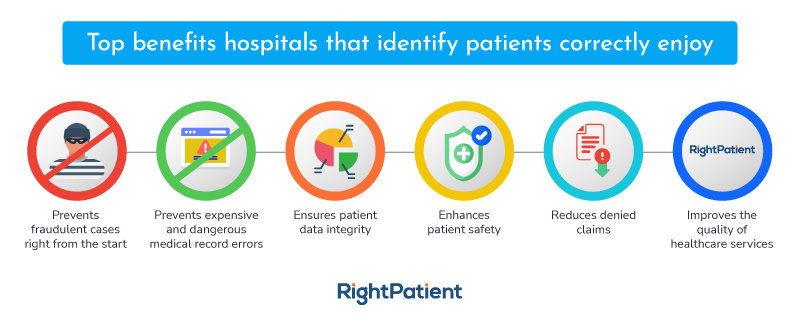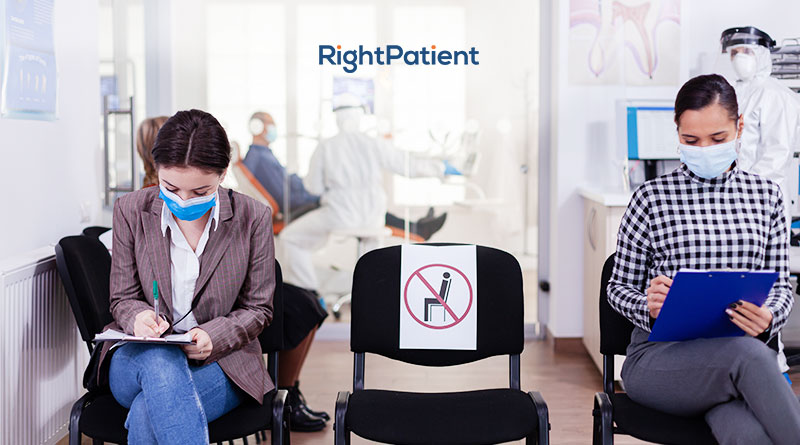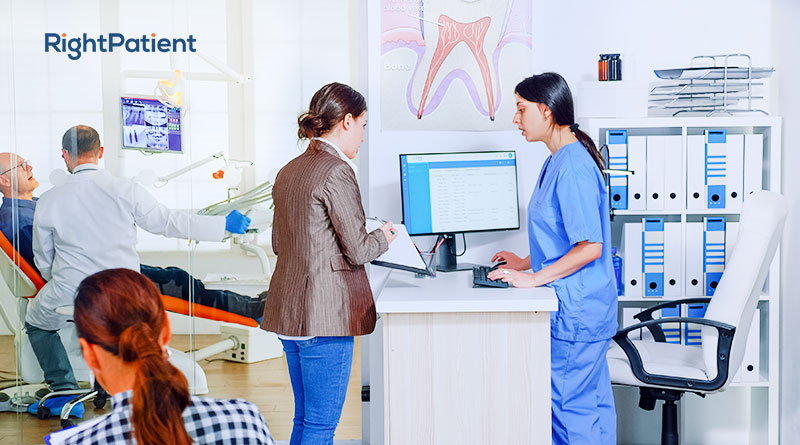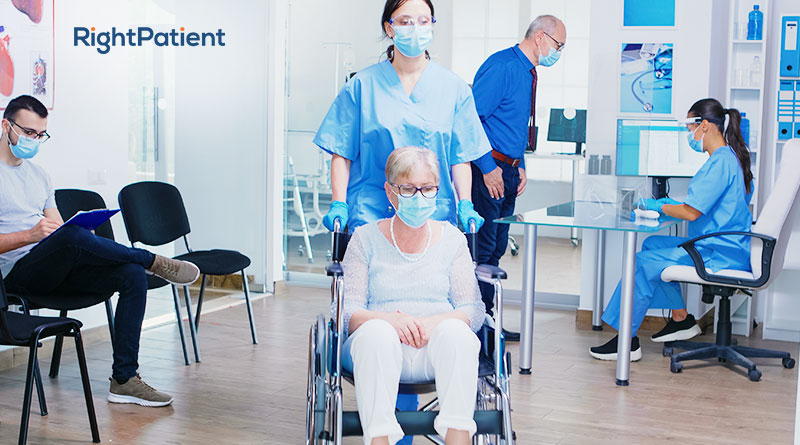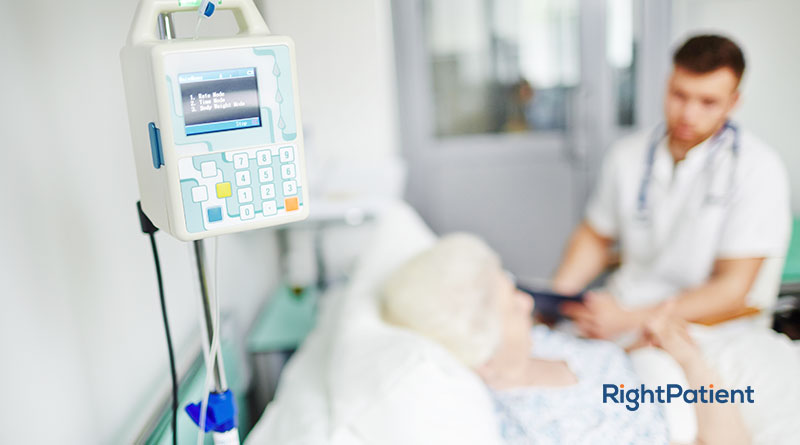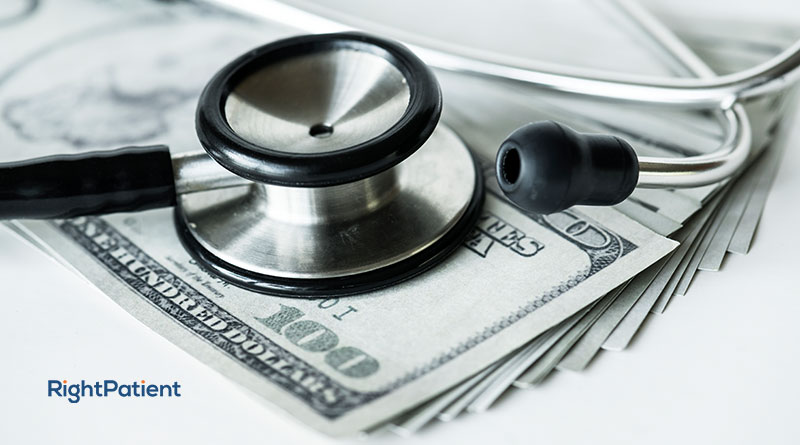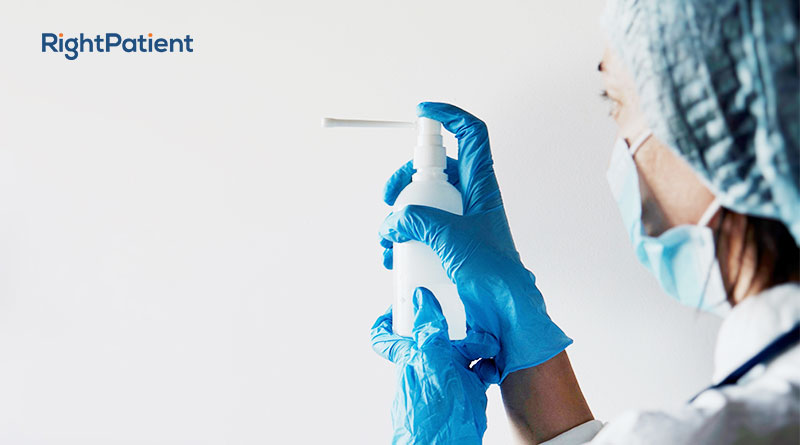Hospitals that Identify Patients Correctly Enjoy Several Benefits

We typically talk about grave situations – stories of patient mix-ups, healthcare data breaches, medical identity theft cases, denied claims, and more. However, this time, we will look at the more positive aspects – the additional benefits that healthcare providers who identify patients correctly enjoy. These range from preventing unwanted patient safety incidents within the premises to enhancing patient outcomes.
However, did you know that our touchless biometric patient identification platform can provide far more benefits? More on that later – let’s dive deep into the topmost benefits of ensuring proper patient identification in hospitals.
Why hospitals must identify patients correctly
Well, in order to understand that, first, one must understand why patient identification is such a big deal. For starters, patient identification is quite problematic in the U.S. healthcare system for several reasons. Since no effective standardized patient identifier has ever been implemented in the U.S., healthcare providers use different methods, solutions, or strategies to verify their patients, and most of them suffer from patient identification errors and the consequences that follow.
Fortunately, responsible healthcare providers don’t have to suffer from these issues because they have made patient safety their number one priority. These providers are utilizing effective solutions like RightPatient to eliminate errors by helping them identify patients correctly.
So, what are the benefits of accurately identifying patients?
Top benefits enjoyed by hospitals that identify patients correctly
Prevents fraudulent cases right from the start
Although wrong patient identification and medical identity theft are both crucial issues of the U.S. healthcare system, many don’t know that preventing the former can also prevent the latter.
It’s quite simple – since there’s no standardized and rigid way to identify patients accurately in most hospitals, fraudsters aren’t identified right off the bat. In fact, many medical identity theft cases remain undetected until the patient receives a shocking bill or notices anomalies with their EHRs.
Hospitals that identify patients correctly can prevent medical identity theft in real-time. When the fraudster comes in, proper patient identification will help officials flag them and catch them red-handed.
This is also applicable even in the case of data breaches. Even if healthcare data is breached, accurate identification will lead to fraudsters being caught in the act, preventing medical identity theft and reducing substantial expenses of rectifying medical record errors and litigation costs down the line.
Prevents expensive and dangerous medical record errors
One of the reasons why patient identification is such a mess has already been mentioned – the lack of an effective patient identifier. However, another reason is the overwhelming medical record errors that already exist in the systems. Duplicate medical records and overlays, namely, have been causing patient mix-ups, leading to the wrong patients getting transplants, incorrect treatments, and more. These duplicate medical record errors typically are created during the registration process, and both their creation and use can be eliminated if patients are identified accurately.
See, if the patient is accurately identified right from the start and the appropriate medical record is used throughout the patient’s medical care history, then duplicates and overlays can be avoided – eliminating the issues caused by them for both caregivers and patients, preserving authentic patient data. This leads to another benefit of proper patient identification.
Ensures patient data integrity
As mentioned, medical record errors, and patient misidentification in general, lead to patient data corruption. Unless patient data integrity is maintained, the information is useless for healthcare providers and quite dangerous for patients. Imagine if a patient has cancer but gets treated for heart disease – it would be catastrophic!
Patient data integrity failures lead to the wrong treatment plans, detrimental healthcare outcomes, readmissions, and even deaths. However, accurate patient identification ensures that the correct information is being recorded in the appropriate medical records – ensuring patient data integrity.
Enhances patient safety
By now, it should be clear that positive patient identification prevents a plethora of issues such as duplicates, patient data corruption, medical identity theft, among other things. However, identifying patients accurately also leads to better healthcare outcomes and prevents medical errors, improving patient safety in the process.
Medical errors caused by mix-ups are prevented which also reduces readmissions – improving patient outcomes. Accurate information arms healthcare providers with the relevant details about the right patient, helping them make informed decisions, something that’s not possible when patients are wrongly identified.
Reduces denied claims
Denied claims are a huge burden for any given healthcare provider, however, most of them can be prevented with accurate patient identification. Let’s look at an example of exactly how denied claims and patient misidentification are related.
Suppose a patient, A, comes in for a checkup and the physician recommends a follow-up, and a small surgical procedure is planned. During the first two visits, A has been identified properly and their medical record includes the proper information. However, prior to the surgery, A is misidentified and the wrong EHR is assigned. Moving forward, everything will be recorded in the wrong EHR.
Now, when it comes to receiving payment for the surgery, the hospital sends a claim to the patient’s insurance provider. However, when the insurance company detects inaccurate coding due to incorrect information, the insurance company “denies” the claim. These billing and coding errors need to be fixed which takes up a considerable amount of resources and time – creating inefficiencies.
Denied claims can cost north of $4 million for the average health system, making it extremely costly for even the largest provider.
Positive patient identification can prevent most denied claims as they are often caused by medical record mix-ups. Moreover, this also frees up FTEs (full-time equivalents) to do their jobs properly – improving efficiency and eliminating bottlenecks.
Improves the quality of healthcare services
Patient identification errors have been rampant for almost two decades, leading to data quality issues. As a result, this information cannot be trusted – if the data is inaccurate, then everything moving forward will also be full of issues.
Proper patient identification ensures that the right patient is connected to their accurate medical record at all times – this itself drastically improves the quality of services they receive. For instance, they won’t get redundant lab tests, incorrect medication, or the wrong treatment plans.
All in all, patient misidentification might seem trivial to many, but if accurate patient identification is ensured, then it brings several benefits for healthcare providers, patients, insurance companies, and everyone else involved.
However, did you know that our patient ID platform, RightPatient, can do even more than everything mentioned above?
RightPatient helps healthcare providers identify patients correctly
RightPatient is the leading biometric patient identification platform that has been helping several healthcare providers protect their patients. However, the factor that sets RightPatient apart from others is that it’s entirely touchless – patients only need to look at the camera during the verification process. The platform matches the saved photo with the live one and provides the accurate EHR once a match is identified.
The fact that RightPatient is contactless is why prominent healthcare providers have chosen it. The platform improves infection control and reduces HAIs (hospital-acquired infections) as there’s no physical contact required, making it ideal in a post-pandemic world.
Caregivers such as Community Medical Centers, Catholic Health Services of Long Island, and the University Health Care System have been using RightPatient and enjoying several benefits such as preventing medical identity theft, reducing duplicates and overlays, protecting patient records, and boosting their bottom lines. Be a responsible healthcare provider now and use RightPatient to see the difference it makes.


